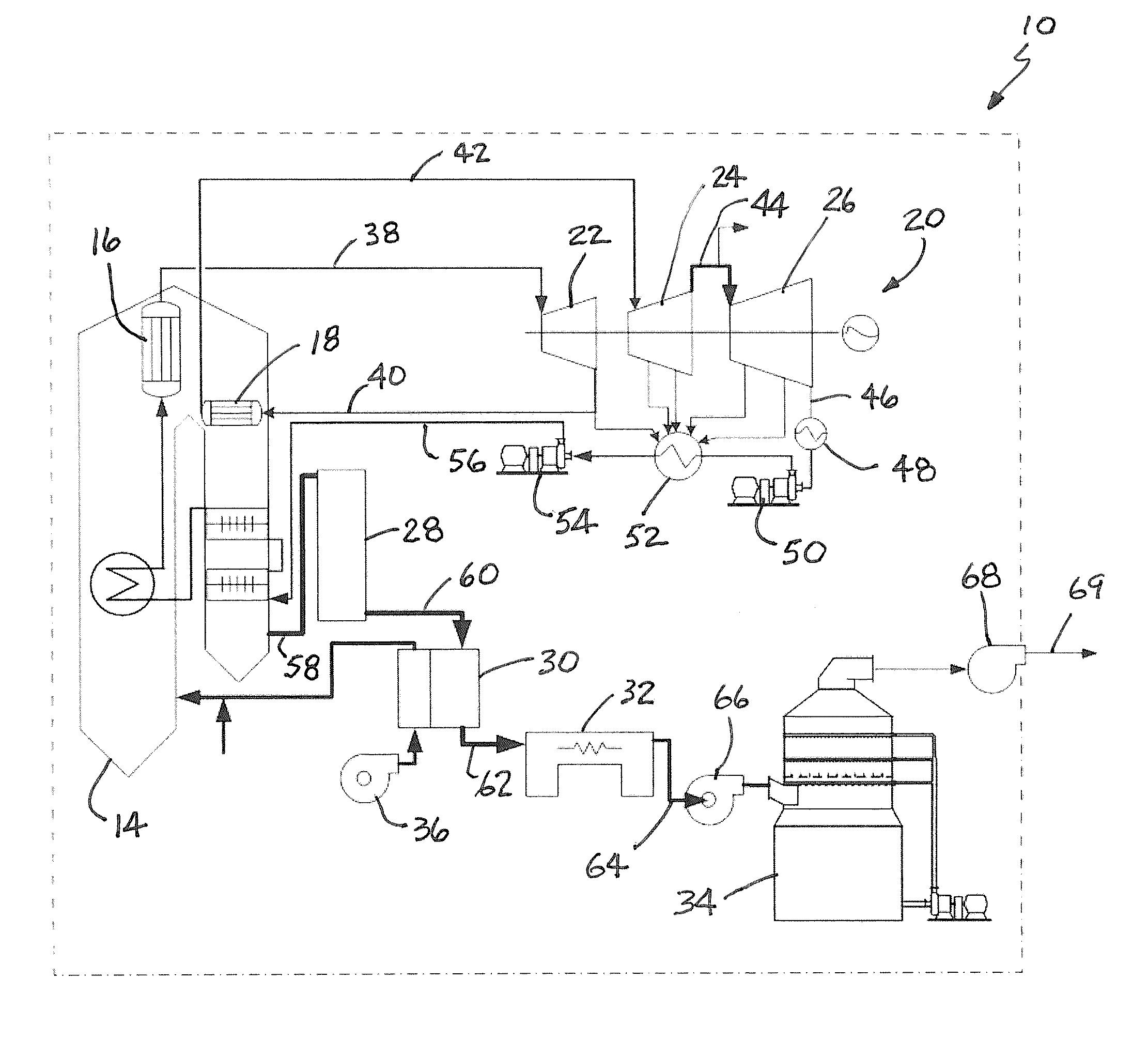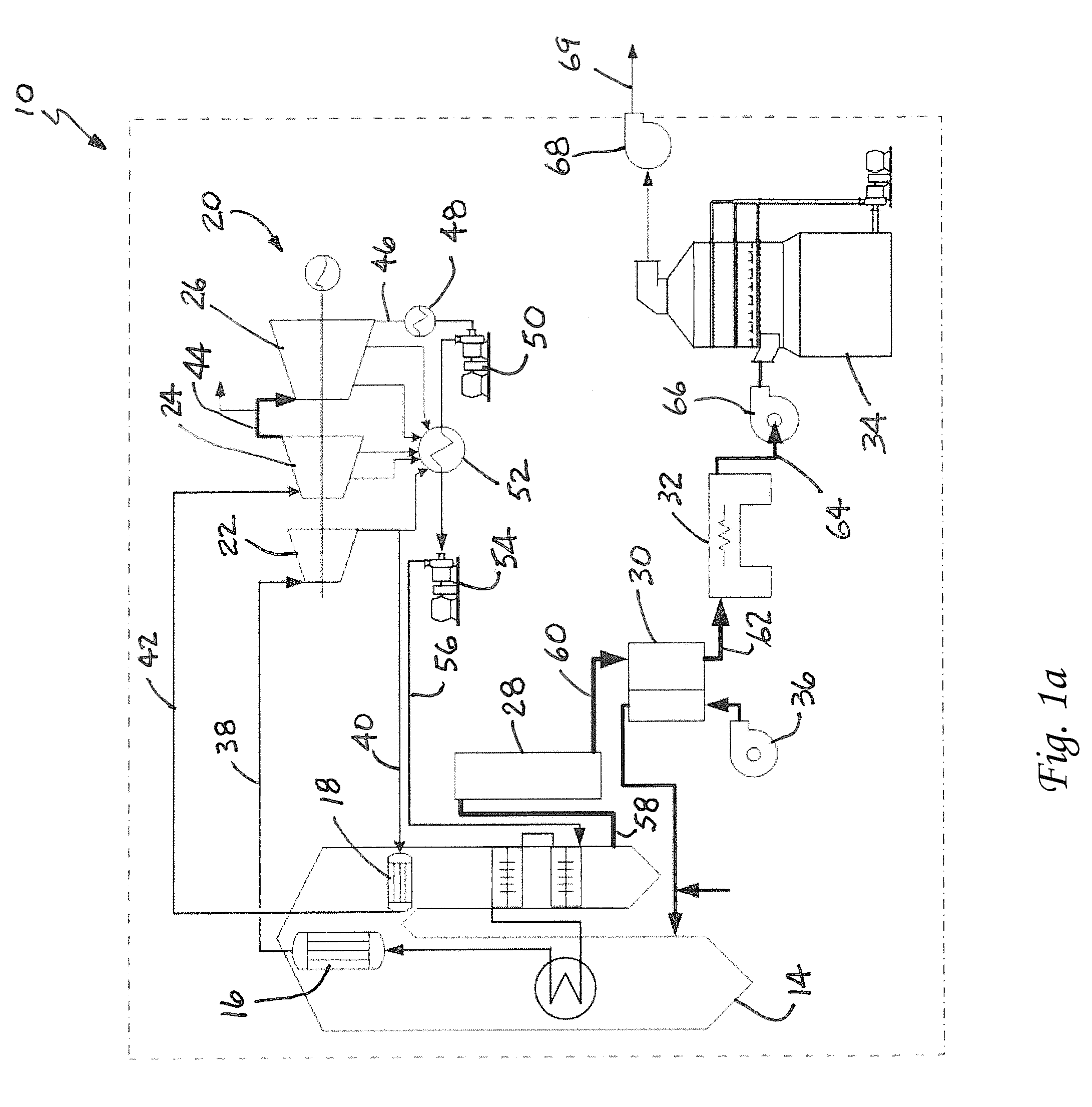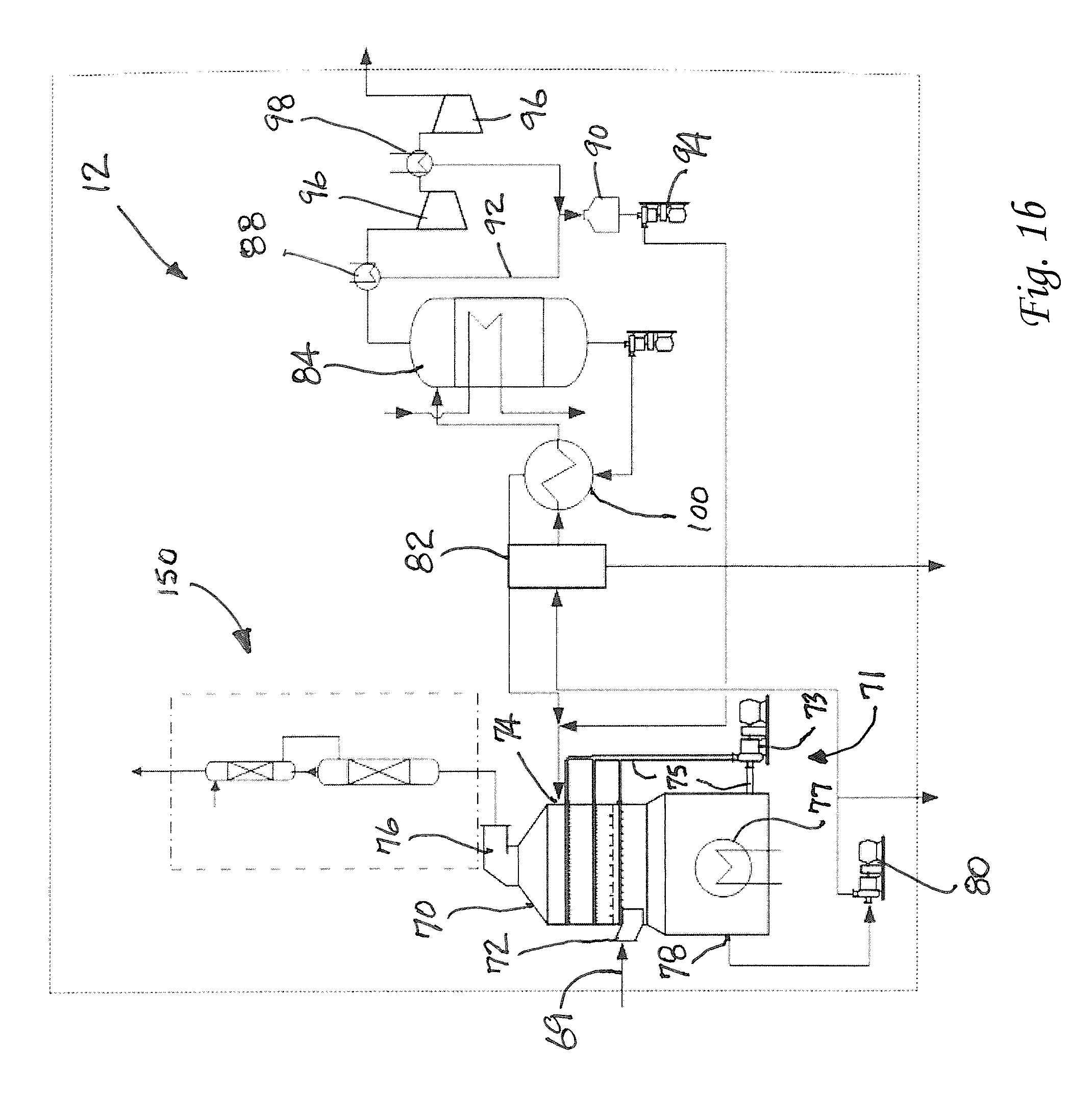Method for removing CO2 from coal-fired power plant flue gas using ammonia as the scrubbing solution, with a chemical additive for reducing NH3 losses, coupled with a membrane for concentrating the CO2 stream to the gas stripper
a technology of flue gas and ammonia, which is applied in the field of apparatus and methods for removing and capturing carbon dioxide from flue gas stream, can solve the problems of high cost of electricity, and high energy requirements for co2/sub
- Summary
- Abstract
- Description
- Claims
- Application Information
AI Technical Summary
Benefits of technology
Problems solved by technology
Method used
Image
Examples
example 1
[0033]FAU zeolite membranes were hydrothermally grown onto tubular mullite supports (so far in our lab, 1.2 cm diameter and 10-cm-ong from Masuda Corporation, the diameter and length could be varied for commercial application), yielding membranes with a total surface area of 37.68 cm2 (will depend on the dimension of support selected). Before synthesis, the outer surface of the mullite tube was seeded with a water slurry of commercially available NaY crystal seeds. The seeded support was then air dried at 80° C. for several hours. The desired gel composition was optimized to grow an FAU zeolite membrane layer onto the mullite support mentioned above. The FAU-type (Y-type herein) zeolite membrane was crystallized from a reactive gel mixture with the following molar composition: SiO2: 0.04 Al2O3: 0.7 Na2O: 0.1 (TMA)2O: 31.5 H2O where TMA+ refers to tetramethylammonium cation. A typical synthesis procedure for FAU membranes followed: NaOH pellets (99.2 wt %, Fisher) were weighted and d...
example 2
[0035]Ammonia loss during CO, absorption experiments were conducted in a 1 inch ID scrubber packed with Berl ceramic saddles. Simulated flue gas consisting of 14 vol % CO2, balance air, was continuously fed into the scrubber bottom with counter-current liquid flow. Experiments were conducted under liquid to gas ratio (L / G) of 100 at ambient pressure and temperature of 20° C. A 2 L volume of solution was loaded with CO2 in a step fashion with the volume passed through the column into a second reservoir. After each step a solution sample was retrieved and analyzed for ammonia loss. CO2 loading was continued until the difference in inlet and outlet CO2 gas concentration was minimal.
[0036]Nickel chloride (Fisher, purity:>97%) with ammonia to metal mole ratio 20:1 was added to 12 wt % aqueous ammonium solution and compared to a control solution without additive. Ammonia contents were determined using Dionex ICS-3000 ion chromatograph. Compared to control, the nickel containing ammonia so...
example 3
[0037]Using the supported membranes described in Example 1 the membrane performance was evaluated. The evaluation apparatus was operated in a counter-current configuration with a tubular zeolite membrane sealed in a stainless steel membrane cell with Viton O-rings. A 15 ml / min constant flow dual piston pump delivered the feed solution to the membrane cell at a maximum pressure of 6.9 MPa. The feed solutions were fed from a magnetically stirred 1.5 l reservoir. Feed solution temperature in the membrane cell was controlled at a constant temperature by an adjustable heating tape. The back-pressure regulator installed at the channel outlet allowed fine control over a wide range of applied pressures within the membrane unit. A thermocouple was inserted into the cell shell side in order to accurately monitor the feed solution temperature in the membrane cell. The NF / RO experiments were run under constant operating conditions until a satisfactory steady state was reached. In the duration o...
PUM
| Property | Measurement | Unit |
|---|---|---|
| weight percent | aaaaa | aaaaa |
| weight percent | aaaaa | aaaaa |
| weight percent | aaaaa | aaaaa |
Abstract
Description
Claims
Application Information
 Login to View More
Login to View More - R&D
- Intellectual Property
- Life Sciences
- Materials
- Tech Scout
- Unparalleled Data Quality
- Higher Quality Content
- 60% Fewer Hallucinations
Browse by: Latest US Patents, China's latest patents, Technical Efficacy Thesaurus, Application Domain, Technology Topic, Popular Technical Reports.
© 2025 PatSnap. All rights reserved.Legal|Privacy policy|Modern Slavery Act Transparency Statement|Sitemap|About US| Contact US: help@patsnap.com



